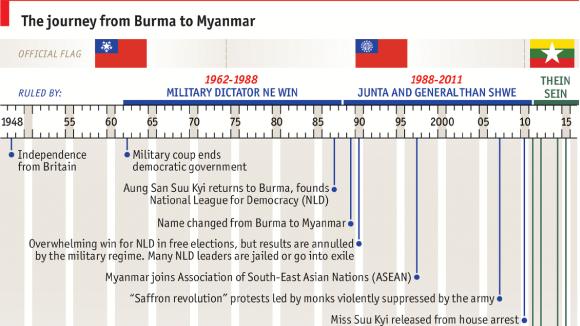Aung Zaya
SENIOR MEMBER

- Joined
- Mar 18, 2014
- Messages
- 3,339
- Reaction score
- 2
- Country
- Location
Singapore firm plans Thilawa galvanising plant
By Steve Gilmore | Friday, 04 November 2016
Tweet 4
Amid booming demand for high-quality construction materials, Meranti Singapore is planning to build a steel galvanising plant and paintline in Thilawa special economic zone. The firm intends to spend US$85 million on the facility, and is in discussion with the SEZ operator and potential local partners, its chief executive told The Myanmar Times.
“We’re in advanced discussions with [operator] Myanmar Japan Thilawa Development and plan to sign the reservation agreement at the beginning of next year,” CEO Sebastian Langendorf said. The firm is also looking for a local and international partner for what will be a joint venture project.
“There will be one local partner and for an international strategic partner we’re talking to steel and trading companies that will help us get the raw materials,” he said.
Meranti was established specifically to set up a factory in Thilawa. The planned factory will galvanise and paint imported steel, with sales focused mainly on the domestic Myanmar building and construction market.
Galvanisation involves coating steel, in the case of Meranti Singapore with zinc and zinc aluminium, to prevent rusting and corrosion.
“There’s a strong market already and we see it growing at double digits year-on-year,” said Mr Langendorf. Around 80pc of the finished steel will be sold domestically, leaving room for potential export to regional markets, the Middle East or even East Africa, he added.
“We see exports as a way tofill capacity,” he said. “We know the [export] markets are there, but we need to assess export conditions on an ongoing basis.”
It will take years for the plant to be fully operational, with the galvanising line expected to start production toward the end of 2019. But this will give the high-quality market Meranti is focused on time to grow.
“From the market survey we’ve done with customers mostly in the Yangon area we see the market moving towards higher quality,” he said. “Foreign investment that requires factories or other buildings will typically demand high-quality steel, so prices in that segment are already pretty solid.”
Potential customers could include pre-engineering building suppliers that cater to foreign and local firms setting up factories or warehouses. Although many foreign firms have production facilities abroad, companies including Coca-cola and carmaker Suzuki produce domestically.
The Singaporean firm’s plant is also an example of the kind of benefits special economic zones are designed to bring – allowing more complex and higher value-added production to happen domestically.
“In terms of productivity it’s a giant leap,” said Mr Langendorf. “The heat treatment and chemical processes that produce [galvanised steel] are extremely complicated, even within the steel value chain.
Meranti is in discussion with Yangon Technological University and Thanlyin Technical University for internship and employment opportunities, he said.
By Steve Gilmore | Friday, 04 November 2016
Tweet 4
Amid booming demand for high-quality construction materials, Meranti Singapore is planning to build a steel galvanising plant and paintline in Thilawa special economic zone. The firm intends to spend US$85 million on the facility, and is in discussion with the SEZ operator and potential local partners, its chief executive told The Myanmar Times.
“We’re in advanced discussions with [operator] Myanmar Japan Thilawa Development and plan to sign the reservation agreement at the beginning of next year,” CEO Sebastian Langendorf said. The firm is also looking for a local and international partner for what will be a joint venture project.
“There will be one local partner and for an international strategic partner we’re talking to steel and trading companies that will help us get the raw materials,” he said.
Meranti was established specifically to set up a factory in Thilawa. The planned factory will galvanise and paint imported steel, with sales focused mainly on the domestic Myanmar building and construction market.
Galvanisation involves coating steel, in the case of Meranti Singapore with zinc and zinc aluminium, to prevent rusting and corrosion.
“There’s a strong market already and we see it growing at double digits year-on-year,” said Mr Langendorf. Around 80pc of the finished steel will be sold domestically, leaving room for potential export to regional markets, the Middle East or even East Africa, he added.
“We see exports as a way tofill capacity,” he said. “We know the [export] markets are there, but we need to assess export conditions on an ongoing basis.”
It will take years for the plant to be fully operational, with the galvanising line expected to start production toward the end of 2019. But this will give the high-quality market Meranti is focused on time to grow.
“From the market survey we’ve done with customers mostly in the Yangon area we see the market moving towards higher quality,” he said. “Foreign investment that requires factories or other buildings will typically demand high-quality steel, so prices in that segment are already pretty solid.”
Potential customers could include pre-engineering building suppliers that cater to foreign and local firms setting up factories or warehouses. Although many foreign firms have production facilities abroad, companies including Coca-cola and carmaker Suzuki produce domestically.
The Singaporean firm’s plant is also an example of the kind of benefits special economic zones are designed to bring – allowing more complex and higher value-added production to happen domestically.
“In terms of productivity it’s a giant leap,” said Mr Langendorf. “The heat treatment and chemical processes that produce [galvanised steel] are extremely complicated, even within the steel value chain.
Meranti is in discussion with Yangon Technological University and Thanlyin Technical University for internship and employment opportunities, he said.
















